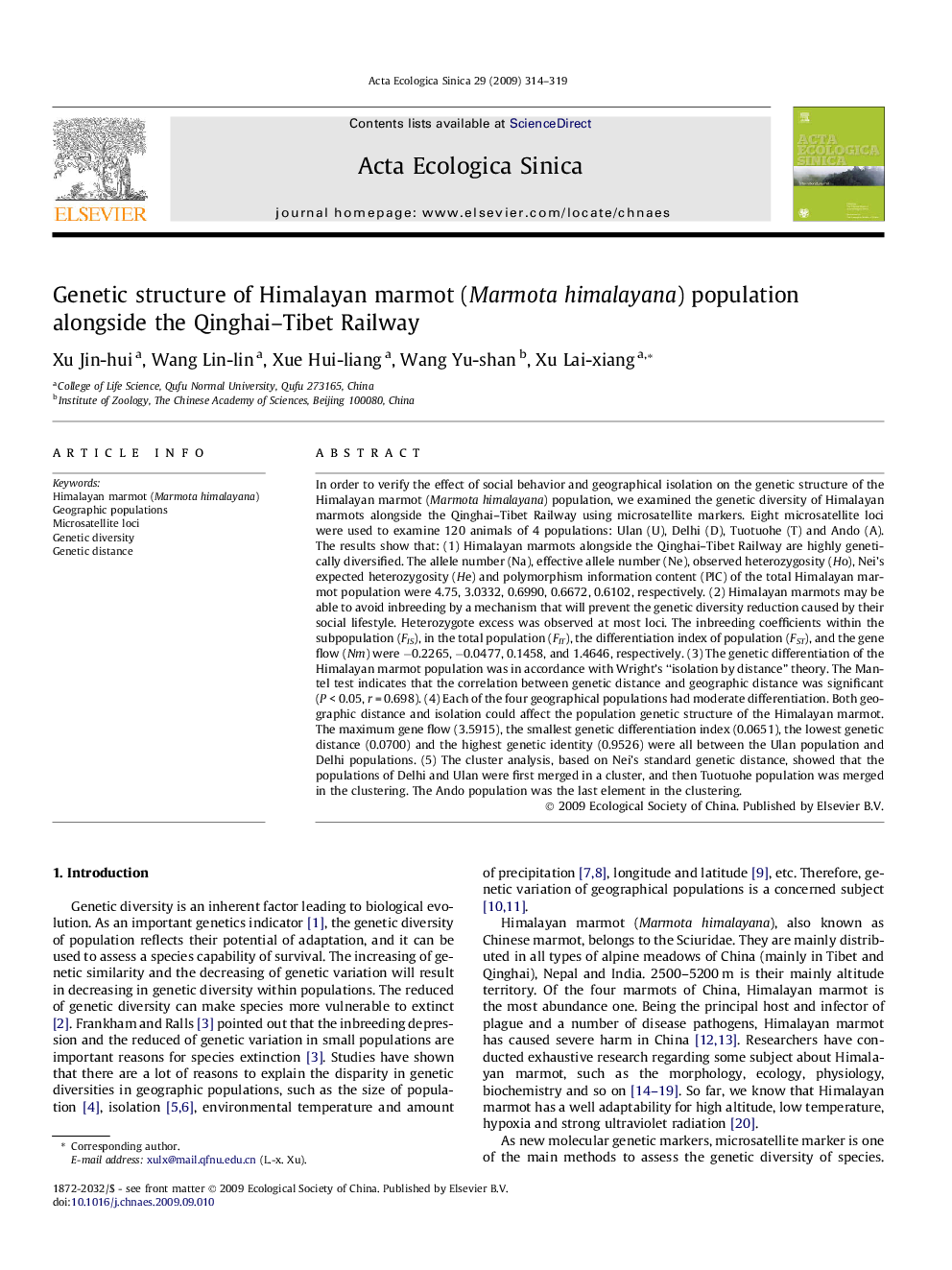| Article ID | Journal | Published Year | Pages | File Type |
|---|---|---|---|---|
| 4380203 | Acta Ecologica Sinica | 2009 | 6 Pages |
In order to verify the effect of social behavior and geographical isolation on the genetic structure of the Himalayan marmot (Marmota himalayana) population, we examined the genetic diversity of Himalayan marmots alongside the Qinghai–Tibet Railway using microsatellite markers. Eight microsatellite loci were used to examine 120 animals of 4 populations: Ulan (U), Delhi (D), Tuotuohe (T) and Ando (A). The results show that: (1) Himalayan marmots alongside the Qinghai–Tibet Railway are highly genetically diversified. The allele number (Na), effective allele number (Ne), observed heterozygosity (Ho), Nei’s expected heterozygosity (He) and polymorphism information content (PIC) of the total Himalayan marmot population were 4.75, 3.0332, 0.6990, 0.6672, 0.6102, respectively. (2) Himalayan marmots may be able to avoid inbreeding by a mechanism that will prevent the genetic diversity reduction caused by their social lifestyle. Heterozygote excess was observed at most loci. The inbreeding coefficients within the subpopulation (FIS), in the total population (FIT), the differentiation index of population (FST), and the gene flow (Nm) were −0.2265, −0.0477, 0.1458, and 1.4646, respectively. (3) The genetic differentiation of the Himalayan marmot population was in accordance with Wright’s “isolation by distance” theory. The Mantel test indicates that the correlation between genetic distance and geographic distance was significant (P < 0.05, r = 0.698). (4) Each of the four geographical populations had moderate differentiation. Both geographic distance and isolation could affect the population genetic structure of the Himalayan marmot. The maximum gene flow (3.5915), the smallest genetic differentiation index (0.0651), the lowest genetic distance (0.0700) and the highest genetic identity (0.9526) were all between the Ulan population and Delhi populations. (5) The cluster analysis, based on Nei’s standard genetic distance, showed that the populations of Delhi and Ulan were first merged in a cluster, and then Tuotuohe population was merged in the clustering. The Ando population was the last element in the clustering.
